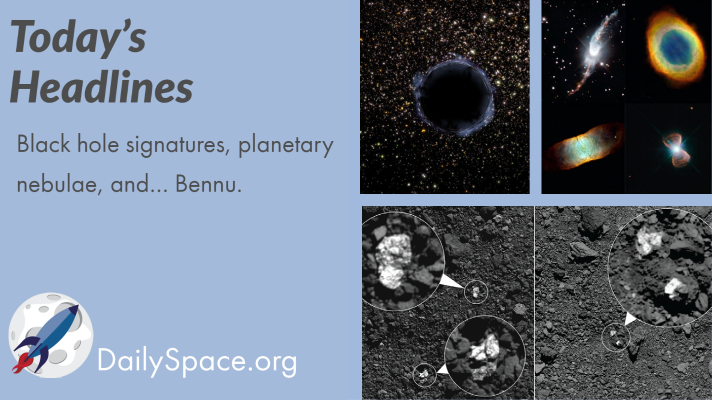
Sep 23, 2020 | Asteroids, Black Holes (Stellar), Daily Space, JAXA, OSIRIS-REx, Planetary Nebulae
Astrophysicists have finally figured out how to tell neutron stars apart from black holes by finding the signature of the event horizon. Another team discovered that planetary nebulae likely get their unique shapes due to binary systems. And we present some updates on the origin of rocks (and rocks and rocks and pebbles) on Bennu. Same with Ryugu, but we don’t hate Ryugu.
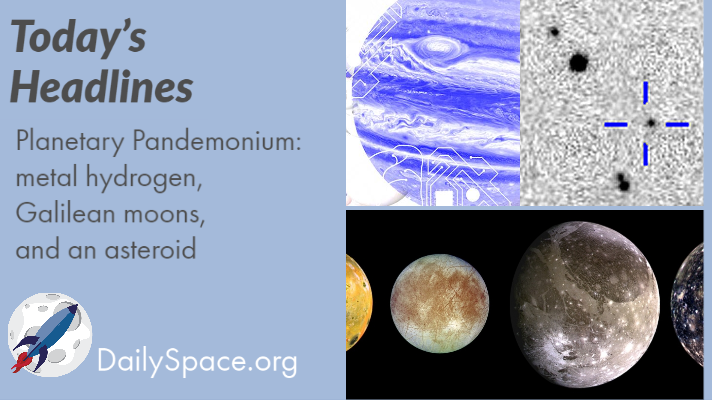
Sep 11, 2020 | Asteroids, Daily Space, Jupiter, Our Solar System, Planets
Join us for this week’s Planetary Pandemonium as host Beth Johnson covers some of the planetary science news for the week, including metal hydrogen (WHAT), Galilean moons (IO), and a newly discovered asteroid, courtesy of a citizen scientist (WOW). Plus an update on Arecibo Observatory.
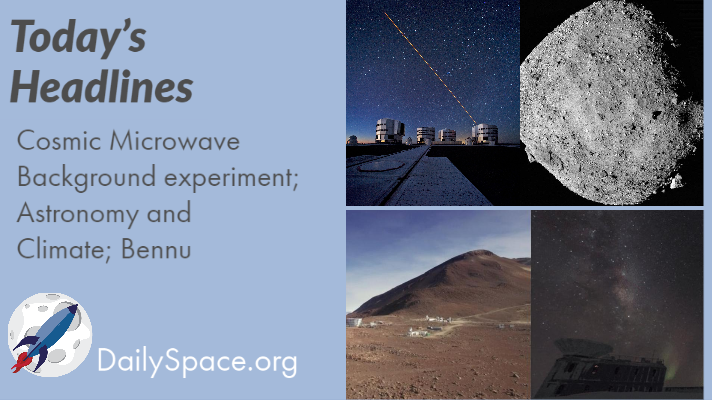
Sep 10, 2020 | Asteroids, Conferences, Cosmology, Daily Space, Earth, Observatories
Join us today as we look at a next-generation Cosmic Microwave Background experiment and then try to get a handle on how astronomy and climate interact. Also, Bennu is ejecting particles into space, because… Bennu.
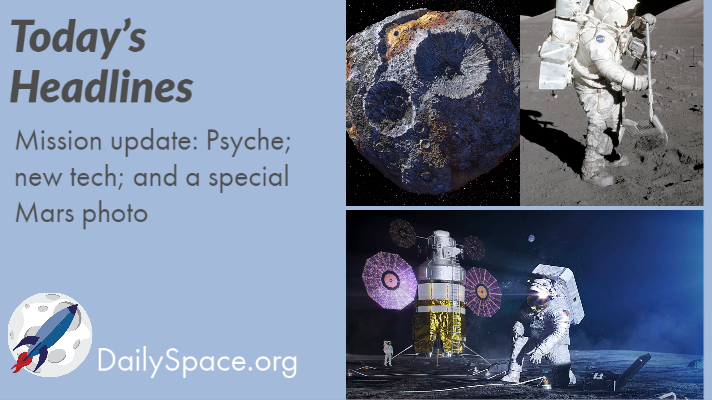
Sep 1, 2020 | Asteroids, Curiosity, Daily Space, Mars, Moon, Spacecraft
Join us today for an update on the Lucy mission to asteroid Psyche. Plus we take a look at a couple new pieces of tech in development, designed to help explore the Moon and Mars. And Curiosity brings us a special Mars photo that isn’t about the ground!
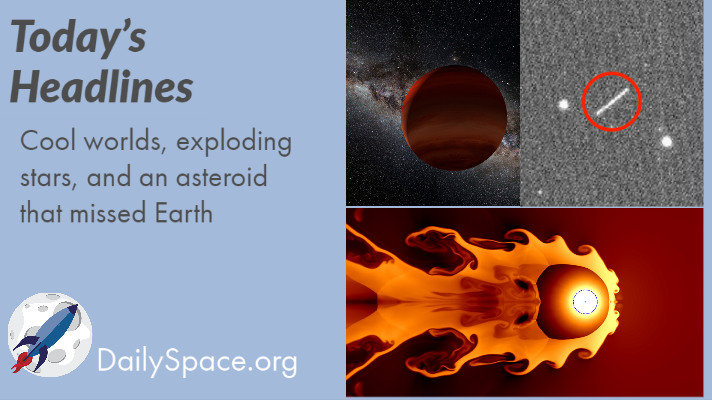
Aug 20, 2020 | Asteroids, Citizen Science, Daily Space, Earth, JAXA, Supernovae
Join us today as we look at how citizen science helped discover 100 cool worlds nearby. Then we examine evidence that exploding stars may have contributed to a mass extinction on Earth. Speaking of mass extinctions, an asteroid narrowly missed our planet last weekend. Because 2020.
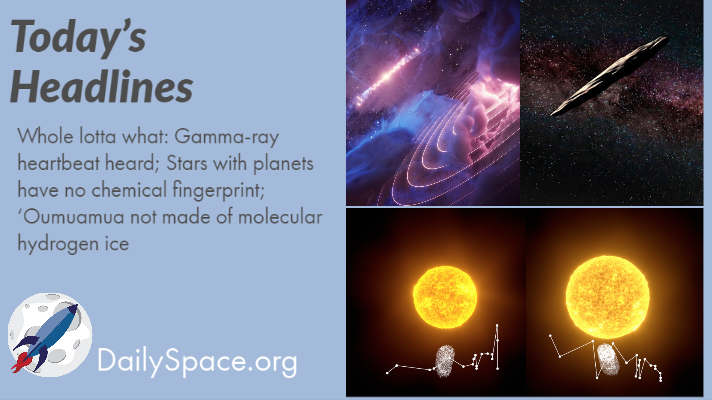
Aug 18, 2020 | Asteroids, Daily Space, Exoplanets, Quasar
Join us today for a lot of unsatisfying news. First, two objects appear to be pulsing in gamma-rays at the same pace, but they’re 100 light years apart. Next, it turns out that stars with planets look chemically like any other star. And finally, our interstellar visitor, ‘Oumuamua, is NOT made of molecular hydrogen ice.








 We record most shows live, on Twitch. Follow us today to get alerts when we go live.
We record most shows live, on Twitch. Follow us today to get alerts when we go live.